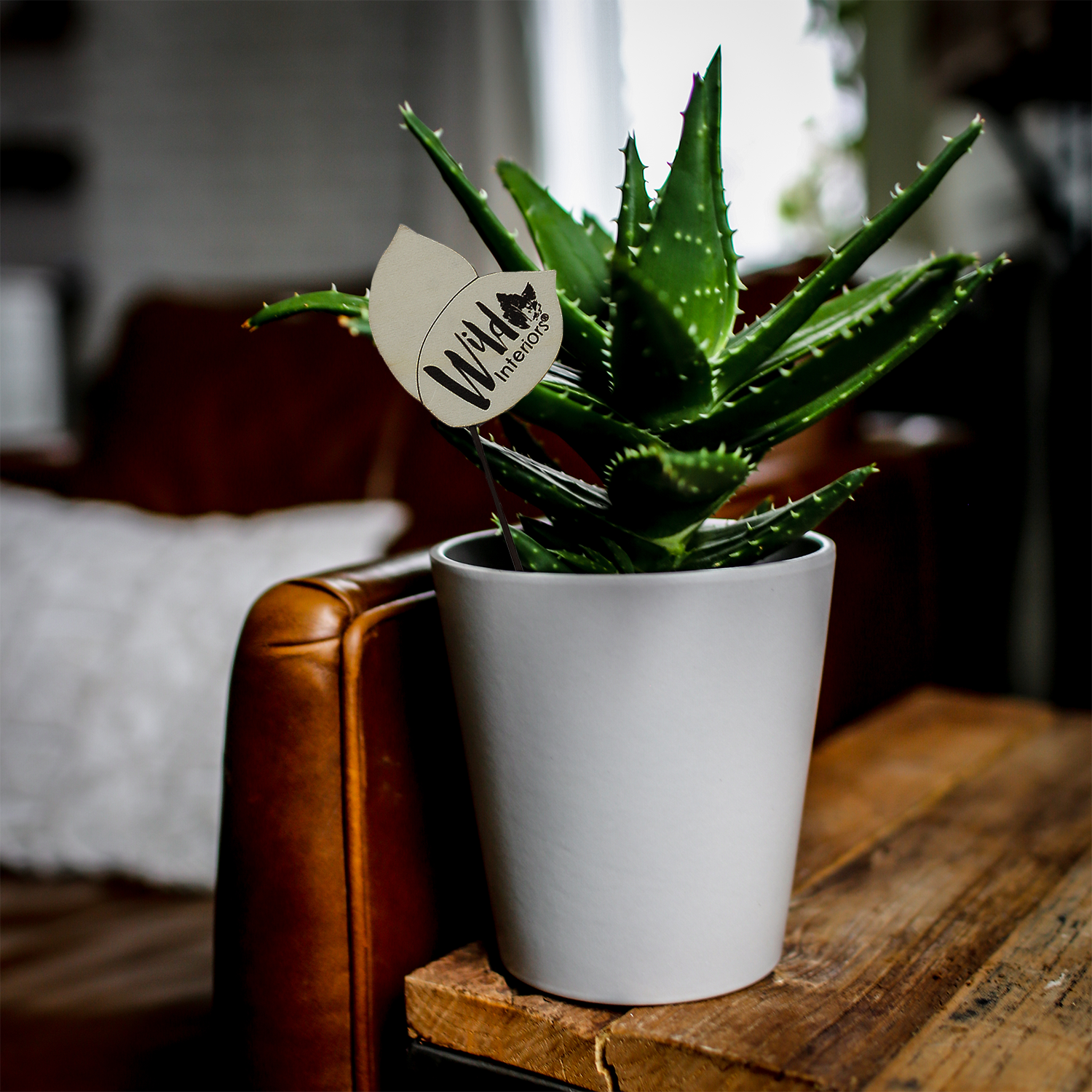How to Care for Aloe
Aloe is the staple plant for every windowsill. Not only does it look interesting and add a unique form and texture to your plant collection, it also has many health benefits. Sometimes known as the “first-aid plant”, aloe has skin moisturizing and healing powers because of its unique cellular make-up. Like other succulents, aloe stores water inside its leaves. It is unique in the way it also contains special beneficial nutrients and chemical components built to help the plant flourish, but can also act for human benefit and defense. Find some of the scientifically researched benefits of aloe here: https://www.medicalnewstoday.com/articles/318591.
There are around 550 known species of aloe in the wild, but we focus on two main species at Wild Interiors—A. aristata and A. mitriformis. Both are dwarf versions of the larger A. barbadensis var. Miller, known most commonly amongst interior plant enthusiasts. Because there are so many aloe species, their uses can vary, so make sure you do your research before trying any aloe home remedies with a specific aloe.
Aloe are succulents, so their care requirements are similar to other common succulent plants like Crassula and Echeveria species. However, there are a few minor differences. Because this is such a rewarding plant, let us help you learn how to care for aloe!
Lighting
Because most aloe species are native to locations where light is not in short supply, aloe can handle some direct light indoors from south or west-facing windows. However, while the plant can absorb some direct light indoors, avoid prolonged direct exposure to outdoor light from open windows or patio areas. Too much light can cause brown and dry, shriveled leaves. Aim for at least 6-8 hours of bright interior lighting each day. The kitchen windowsill is a common home for most interior aloe.
Watering
In ideal conditions, water your aloe when you notice that the potting mix is almost dry. The key is “almost dry.” If you wait until the potting mix is completely dry, the plant’s root zone may suffer. You may also lose a few lower leaves if the plant is forced to use stored moisture. By feel, test the mix at least once a week to make sure your aloe is hydrated. If the top 2-4” is dry, deeply water the plant with water until you notice drainage coming from the bottom of the container. Allow the excess water to completely drain before replacing the grower’s pot in a decorative container or plant saucer to avoid root health issues. Sitting water is the enemy of aloe! You may not need to water your aloe every week depending on its growing conditions. Decreased light in winter months can slow water use especially.
Fertilizing
Fertilize your aloe sparingly to avoid root burn. Usually, once each spring is sufficient. You can use a liquid fertilizer or slow-release pelleted fertilizer. Follow interior plant rate recommendations listed on your fertilizer of choice.
Temperature
Aloe naturally grows in warm climates. Avoid exposing the plant to temperatures below 55 degrees Fahrenheit.
Common Problems
Like most succulents and interior plants, aloe is susceptible to problems caused by overwatering. If you notice lower leaves starting to yellow and turn to mush, cut back on watering and consider moving your plant to a better location with bright, interior lighting and good air circulation. Make sure that you allow the plant to use up moisture from the potting mix between waterings and that it does not sit in a pool of drainage water. Avoid wetting the leaves when possible to prevent decay as well. Choose to water in the morning to prevent sitting moisture overnight.
Aloe has a few common interior pests to watch out for including mealybugs and scale. If you notice pests, isolate the plant. Spray the plant with a stream of water to knock off any loose pests. Usually, this is a safe way to lower populations before taking treatment actions. Then, consider using 70% isopropyl alcohol to treat the plant, applying it to the front and back of leaves. You may have to repeat the process each week for a few weeks before you see the pests disappear. Mealybugs and scale both have protective coats to prevent absorption of contact sprays, so they must be killed in their larval stage. Stick with it, though! Infestations of these pesky critters can be overcome.
Got Questions? Email us or find us on Instagram @wild_interiors to ask any of your aloe questions!

